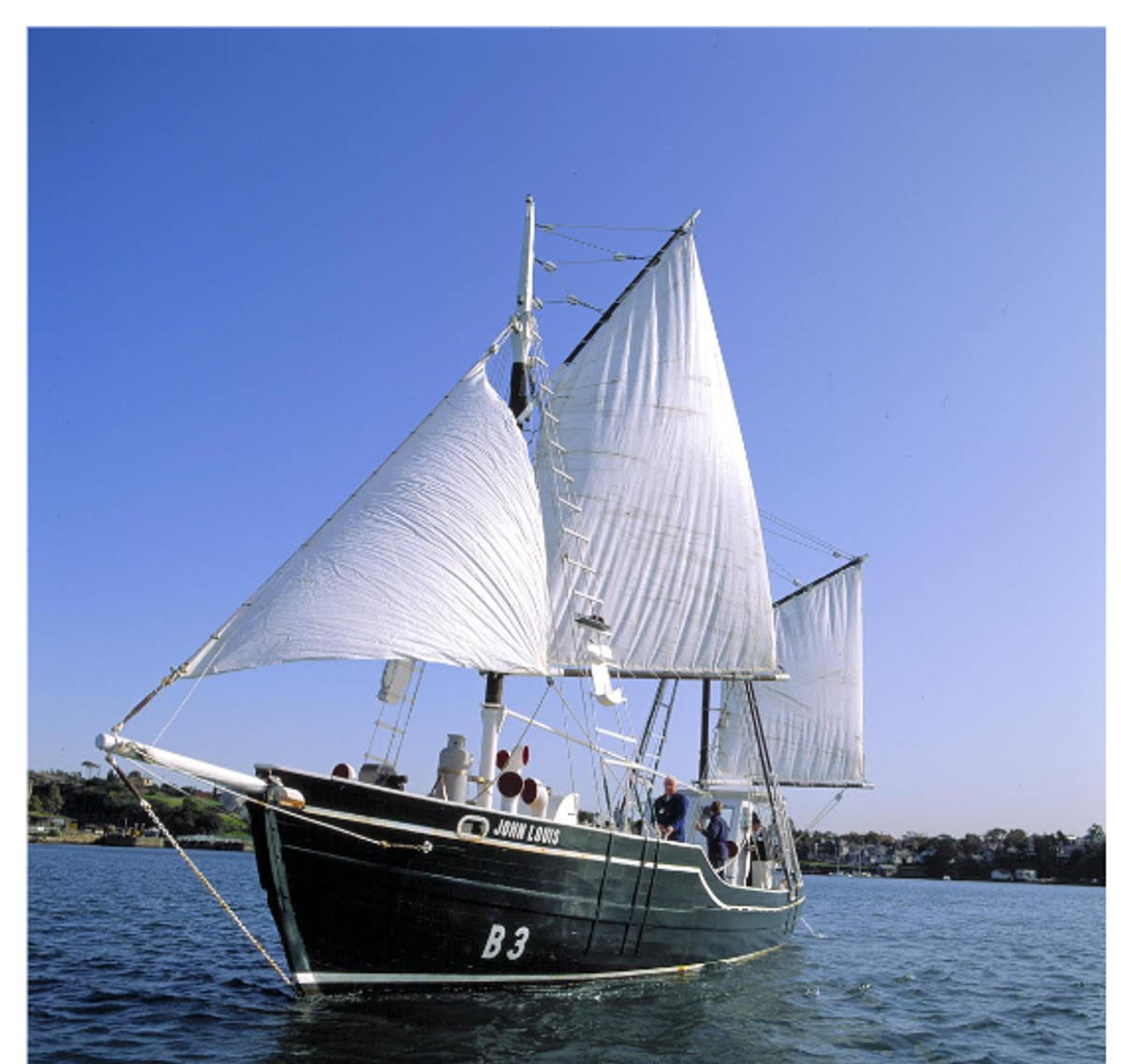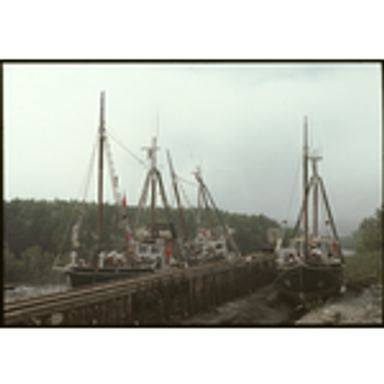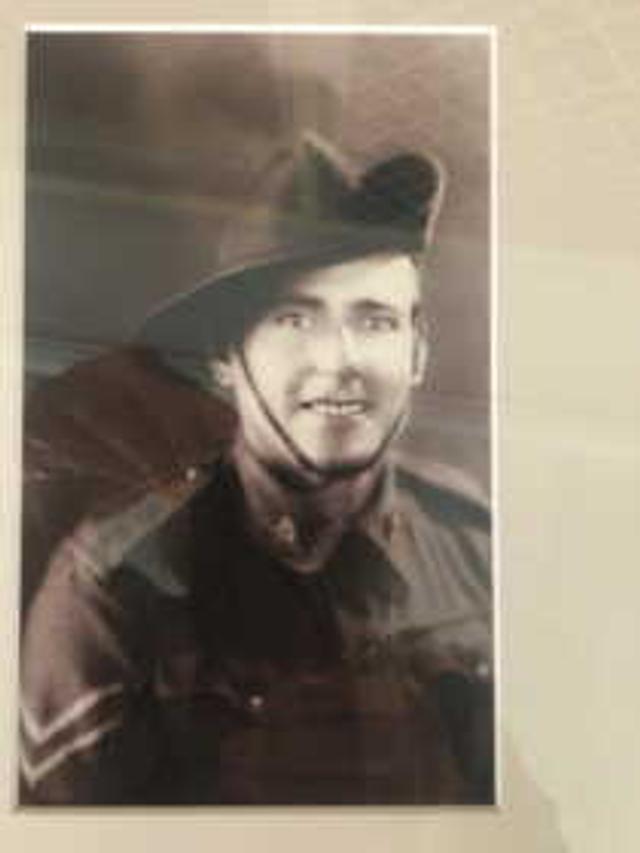Pilus bin Jamiron
Vessel Name: John Louis
Pilus bin Jamiron
Died from the bends; body recovered
3 December 1962

The John Louis

Buccleuch B6, Kim B1 and John Louis B3

Lou Placanica
The John Louis is a 21.11 ton two-masted auxiliary ketch with carvel jarrah planking – very much a typical pearling vessel.
She was registered as number 7 of 1959, although she was built in 1957 by A S Male in Broome for Louis Placanica. Her official number was 196906.
The northwest knew Louis as Lou. He was born in 1915. He had four children with his first wife, Thelma, and they are still living. Lou passed away in 1994. He is remembered as one of the northwest’s success stories.
He named his boat after his son, John. He had her built to collect pearl shell for jewellery, buttons and suchlike. She was a brave well-catching boat, and Lou became known as a master pearler. Lou’s divers collected a lot of shell and made him a lot of money.
John Louis measured 51.3 feet [20m] in length, 14.4 feet [4.4m] across her beam and she had a draft of 7.2 feet [2.2m]. She had “verandas” (outriggers) that let down from the sides of the lugger separate the divers below. They wore hard hat dress and heavy boots. The verandas kept the divers separate and on their prescribed paths for shell collection.
Lou Placanica grew up fishing and crayfishing with his father Fortunato, who was a well-known fisherman on the West Australian coast. Fortunato had taught all his three sons to fish, and Lou had taken to fishing as a young man. He branched out doing lighter work and other marine jobs on his own when his father did not need him aboard his fishing boats.
Lou had a healthy respect for the ocean. He had been aboard two of Fortunato’s vessels when they sank. In 1938 Lou was aboard the lighter Agnes laying buoys near the wrecked Lyngnern outside Fremantle harbour. He caught his right leg in a slipping chain and was thrown into the water. He was rescued and taken to hospital.
The war interrupted fishing and pearling. Lou and his brother Tony enlisted in the Australian Infantry Service in 1942. Lou came back to West Australia six years later. He still felt the call of the ocean and in 1948 Lou was working as a bosun on pleasure launches Emerald and Zephyr. In 1950 he was offered a position as master of the pearling lugger Sambo, an ex-ferry boat, and he sailed to Onslow to start pearling. He took to it well, using Malay divers.
In 1951 he bought the Roebuck Billiard Saloon in Broome. Then he bought racehorses and was successful with them. In 1957 he had the John Louis built. Between 1957 and 1967 she collected pearl. Lou became so enamoured of his Broome life he did not go home. His wife divorced him on the grounds of desertion.
John Louis was considered a safe boat, without the numbers of losses others had. On 3 December 1962 Lou’s Malay divers were working in deep water off 80 Mile Beach. When the second diver Pilus bin Jamiron was on his third dive, he came to the surface showing severe symptoms of divers’ paralysis (the bends).
The first diver Shoji Takata operated the valve on his air pipe and put Pilus back under the water. Pilus rallied under the higher air pressure for a while. After his final staging the crew brought Pilus up on deck, but he had not survived.
There was an inquest, and the coroner concluded Pilus’ death was the result of the bends. There is not much known about him. His mother’s name was Lencei. He was born in 1936, and he was 26 years of age when he died.
In 1971 John Louis started another life when pearl shells were replaced with plastics. Lou focussed on collecting young shells which were seeded and cultivated. The market had shifted, and Lou took his lugger to service the new pearl farms in West Australia, Thursday Island and the Torres Strait. She worked as a pearl farming boat until her working life was done. In that year John Louis distinguished herself as the first lugger to trial hookahs (light breathing apparatus connected to an air supply on deck).
Captain Peter Cumming, Superintendent of Pearls Pty Ltd and ex-navy officer, saw hookahs used by abalone divers. He modified the John Louis for the trial, and she was re-registered. It became the favoured diving equipment. By 1974 the industry had converted almost entirely to hookah use.
The Australian National Museum acquired John Louis and returned her to her original operational diving configuration. She remains with the museum as a lugger who proudly carried out her duties, with only one recorded death.
